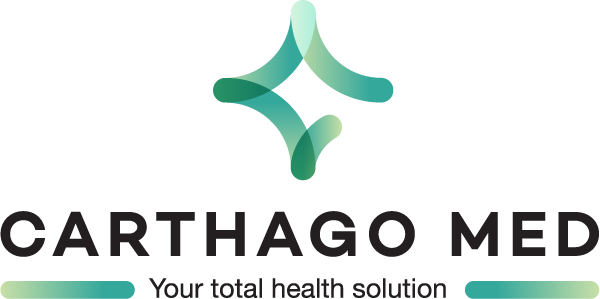
What Are The Dangers of Undergoing Lipo?
Liposuction, a popular cosmetic procedure aimed at removing excess fat, is not without its risks and potential complications. Understanding the possible dangers associated with liposuction is crucial for individuals considering this cosmetic intervention. Below, we delve into the various risks and complications associated with liposuction, shedding light on the importance of informed decision-making.
1. Bruising after Liposuction
One of the common side effects of liposuction is bruising. While bruising is a natural response to the surgical process, excessive bruising may raise concerns. Understanding the factors influencing bruising post-liposuction and how to manage it is essential for patients.
2. Anesthesia Risks
Anesthesia is a crucial component of the liposuction process, but it comes with its own set of risks. Anesthesia risks include allergic reactions, respiratory issues, and adverse responses to medications. Patients need to be thoroughly evaluated for any pre-existing conditions that might increase these risks. Clear communication between the patient and the anesthesia team is vital to ensure a safe and effective administration of anesthesia during the liposuction procedure.
3. Infection after Liposuction
The risk of infection after liposuction is inherent in any surgical procedure. Maintaining strict hygiene protocols during and after the surgery is essential to minimize this risk. Antibiotics may be prescribed to prevent infections, and patients should be educated on postoperative care practices to reduce the likelihood of complications.
4. Swelling after Liposuction
While some degree of swelling is expected post-liposuction, excessive or prolonged swelling can be a cause for concern. Understanding the factors influencing swelling after liposuction, such as fluid retention and inflammation, is crucial. Implementing proper postoperative care, including compression garments and elevation, can help manage and reduce swelling.

5. Poor Healing
Poor healing after liposuction can lead to delayed recovery, increased discomfort, and suboptimal aesthetic outcomes. Factors such as the patient’s overall health, adherence to postoperative instructions, and the surgeon’s technique can influence the healing process. Patient education on wound care and follow-up appointments for monitoring are essential components of mitigating this risk.
6. Irritable Skin Sensation or Numbness
Alterations in skin sensation, including irritable skin sensation or numbness, are common after liposuction due to nerve manipulation during the procedure. Patients should be informed about the temporary nature of these sensations and reassured that they often resolve over time. Monitoring and reporting any persistent issues are crucial for postoperative care.
7. Fluid Build-Up
Fluid build-up, known as seroma, is a potential complication after liposuction. Surgeons can minimize this risk by employing proper surgical techniques and prescribing drainage as needed. Patients should be educated about the signs of fluid build-up, and timely intervention can prevent complications and ensure a smoother recovery.
8. Contours and Asymmetries to Body Shape
Achieving the desired body contours is a primary goal of liposuction, but the risk of contours and asymmetries exists. Surgeons must carefully plan and execute the procedure to minimize these risks. Postoperative monitoring and potential revision surgeries may be necessary to address any asymmetries and ensure patient satisfaction.
9. Fat Embolism after Liposuction
Though rare, a fat embolism is a serious and potentially life-threatening complication that can occur during or after liposuction. Surgeons must take precautions to prevent the dislodgment of fat particles into the bloodstream. Recognizing the symptoms of a fat embolism and prompt medical intervention are critical in managing this risk.
10. Thermal Burns from Ultrasound and Laser Lipo
Certain liposuction techniques, such as ultrasound and laser-assisted liposuction, carry the risk of thermal burns. Surgeons should be well-trained in these techniques to minimize the risk, and patients should be informed about alternative methods. Proper postoperative care and monitoring can help identify and address any signs of thermal injury.
11. Damage to Abdominal Organs, Muscles, and Nerves
Invasive procedures like liposuction may pose the risk of damage to abdominal organs, muscles, and nerves. Surgeons must have a thorough understanding of anatomy and take precautions to minimize these risks. Comprehensive preoperative assessments and adherence to established surgical protocols are essential to ensure patient safety.
12. Nerve Injury
Nerve injuries during liposuction can result in various sensory issues. Surgeons should employ meticulous techniques to minimize the risk of nerve damage. Patients should be informed about the potential for temporary or permanent nerve injury and the steps taken to mitigate this risk during the procedure.
13. Scarring after Liposuction
While liposuction is known for minimal scarring, complications may lead to scarring. Surgeons should educate patients on the factors influencing scarring, such as wound care and genetics. Implementing scar management techniques and monitoring the healing process can help minimize the visibility of scars.
14. Unsatisfactory Results
Despite careful planning, liposuction may yield unsatisfactory results for some patients. Realistic expectations should be set during preoperative consultations, and surgeons must communicate openly about the limitations of the procedure. Postoperative evaluations and potential revision surgeries may be considered to address any concerns and enhance patient satisfaction.
In summary, a comprehensive understanding of the risks associated with liposuction is crucial for both patients and healthcare providers. Thorough preoperative assessments, effective communication, and vigilant postoperative care are key elements in mitigating these risks and ensuring a successful liposuction experience.









